Chinese Name: 东岳庙 Pronunciation: dōng yuè miào
Building Time: 1319
Best Visiting Season: All Seasons
Recommended Time for Visit: 2-3 Hours
Occupied Area: About 47,400 square meters
Building Function: To sacrifice the Great Deity of Mount Tai
Address: No. 141 Chaowai Street, Chaoyang District, Beijing
Popular Activities: Local people going to the temple fair to pray in Spring Festival.
| Tourists | Ticket Price |
| Adults & Children (Taller Than 1.2 Meters) | 10 yuan |
| Students (With Valid Chinese Students Card) | 5 yuan |
1. Seniors (with valid Chinese seniors’ card);
2. Children younger than 6 years old or under 1.2 meters;
3. The disabled with valid Chinese disability certificate;
4. Military personnel in active service, and firefighters or students from fire and rescue academy;
5. People who are ready to help others for a just cause, religious people from Taoism association, retired cadres, and museum staff (with valid Chinese certificates)
| Temple Gate | All Seasons |
| Opening Hours | 8:30-16:30 |
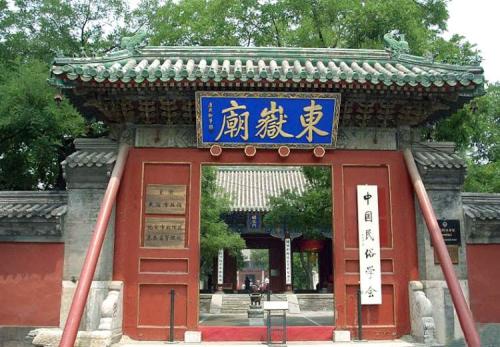
The Dongyue Temple was built during the reign of Emperor Yanyou (1314-1320) in the Yuan Dynasty (1271-1368) to worship the Great Deity of Mount Tai. The temple with an area of about 47,400 square meters and more than 300 ancient rooms, symbolizes the unique architectural styles of Yuan, Ming, and Qing Dynasties (1271-1912). In the long course of history, it served as the national sacrificial place known for grand folk sacrificial activities. The temple fair in the Spring Festival each year has been included in the national intangible cultural heritage list, and there are also colorful temple activities during the Chinese Dragon Boat Festival, the Mid-Autumn Festival, and the Double Ninth Festival.
In 1319, Zhang Liusun, a Yuan Dynasty celebrated official and descendant of the Daoist Zhang Daoling, collected money to acquire land for the building of the temple.
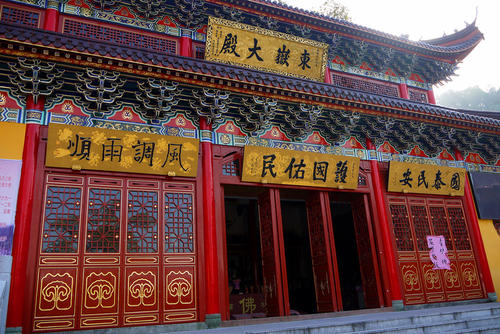
From 1447 to 1585 in the Ming Dynasty (1368-1644), the temple underwent expansion twice, among which the present name was offered during the reign of Emperor Zhengtong (1436-1469) of the Ming Dynasty.
In the Qing Dynasty (1636-1912), it was rebuilt in 1698 during the reign of Emperor Kangxi (1661-1722) and again in 1761 during the reign of Emperor Qianlong (1736-1796). The basic layout was completed during the reign of Emperor Daoguang (1820-1850).
After the founding of the People’s Republic of China in 1949, the temple has experienced a transformation from severe damage to an entirely new shape. Great efforts have been made to its protection and traditional culture transmission by the government.
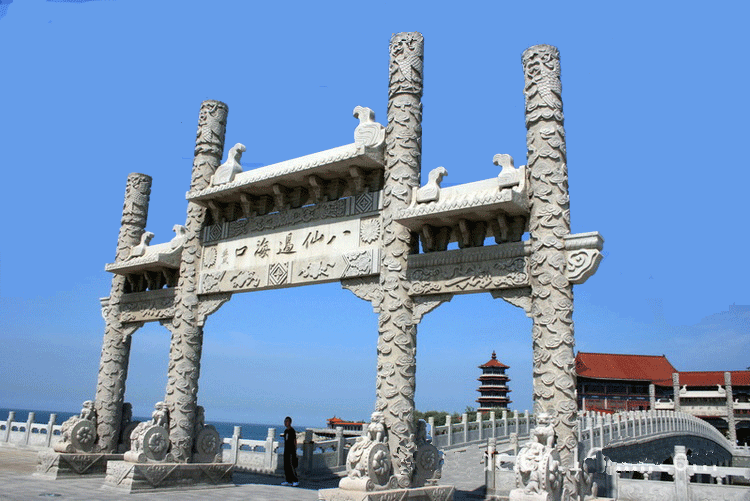
Built in the reign of Wanli Emperor (1572-1620) of the Ming Dynasty, it is a yellow colored glaze archway with four columns and seven roofs. There are two stone tablets respectively on the north and south sides of its center. The stone tablet is 2.8 meters wide and 0.9 meters high.
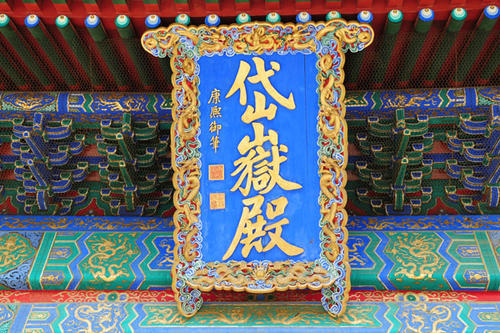
As the main palace of the temple, it is made up of three beautiful halls, with the pillars and roofs decorated with gold Chinese dragons and elegant paintings. The Chinese characters “岱岳殿” (pronunciation: dài yuè diàn) on the top of the plaque was written by Kangxi Emperor of the Qing Dynasty.
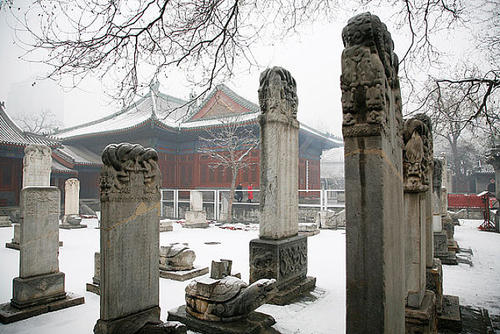
There is a stone tablet with two sides carved with two Taoist boys carrying a lantern. It is said the two boys often came out of the temple with lanterns at night to play. They would always eat much candy at a fruit store but never paid. The stall owner, very angry, wanted to find their parents and asked around, but no one knew the two children. So the stall owner secretly followed them at night, just seeing them entering the temple, and then disappeared.
"Little gold beans" are a blue and white stone strip spread on the west side of the platform of Mount Tai Palace, inlaid with gold dots as bean-sized as grains. Washed by the rain, it shines brightly. People thought it was gold and rushed to get it, also giving it the name of "little gold bean". These shining dots are just natural copper formed under natural conditions.
Enter from Zhandai Gate →Royal Stele Pavilion →Mount Tai Palace →Yu De Palace →Fu Cai Palace →Guang Si Palace
Take bus 110, 109, 75, 750, 420, 112, 101, 202, or 615 and get off at the Shenlujie Station.
By Subway
Take Metro Line 2 and get off at the Chaoyangmen Station and get out from exit A.
Take Metro Line 6 and get off at the Dongdaqiao Station and get out from exit A.
By Taxi
Chinese: 请带我去东岳庙。 English: Please take me to the Dongyue Temple.
If you go to the Dongyue Temple from the center of Beijing (Grand Hyatt Beijing), it takes about 25 minutes (about 20 yuan).
If you go to the Dongyue Temple from Beijing Capital International Airport, it takes about 50 minutes (about 80 yuan).
If you go to the Dongyue Temple from Beijing Daxing International Airport, it takes about an hour and 15 minutes (about 180 yuan).
If you go to the Dongyue Temple from Beijing West Train Station, it takes about 40 minutes (about 40 yuan).
